This articles was last updated on 02/12/2024.
The first piece of alpaca clothing I owned was a pair of alpaca socks. From the moment I put them on, I fell in love. My husband bought them for me as a gift and little did he know, I was going to become a huge fan and advocate of alpaca products. Flash forward a few years and our farm is producing its own alpaca socks made from Michigan fiber and made in the USA. We’ve come a long way from the moment I put on my first pair. As we migrated from consumer to alpaca farmer to sock producer, I’ve learned a lot about alpaca fiber, manufacturing alpaca socks, and helping our store customers find the best socks for their individual needs and wants.
In today’s post, I’d like to walk through the amazing properties of alpaca fiber, why it’s a great material for socks, and what you should know about purchasing your first pair of alpaca socks.
Why People Love Alpaca Fiber
Alpaca socks are very popular, and it is not by accident. Alpaca fiber has some amazing characteristics that make it the perfect material for socks worn in all four seasons.
Here is why alpaca fiber is the perfect material for socks:
- Warmth – Alpaca have medullated fibers, which create a thermal barrier and lead to extreme warmth in clothing. The medulla is hollow, and it traps the heat and provides superior insulation.
- Hypoallergenic – Alpaca does not contain lanolin, so it is a naturally hypoallergenic fiber. While this won’t matter to everyone, it does matter to people like me and my son. We are both very allergic to sheep’s wool and we cannot wear even a blended sheep’s wool product for more than a few minutes. This is not the case with alpaca products. Sheep’s wool turns my head red and makes me itch right after I put it on. And yet with alpaca products, I can wear them all day without issue. No redness and no itching.
- Wicks away moisture – Another cool property of alpaca fiber is its ability to wick moisture away from the skin. This makes it a favorite material for kids’ sports, skiing, hunting, and outside work environments.
- Reduces odor – If stinky feet are a problem you deal with, alpaca socks will be your new best friend. Because alpaca fiber wicks moisture away from the skin, it greatly reduces opportunities for smelly feet and odors.
- Water repellant – My silly alpacas lounge around outside on rainy days and snowy nights. They have 24/7 access to shelter but often choose to ignore it. They can stay outside in wet weather because they don’t really feel the water. Their fiber naturally repels the water, and they just don’t realize it’s as wet outside as it is. While I cannot say your alpaca socks will let you sleep outside in the snow, I can say they will help protect your skin from water.
- Fire-resistant – Alpaca fiber is naturally fire-resistant. Note I didn’t say fireproof, I said resistant. The fiber has a natural ability to slow the ignition of flames and prevent flames from growing. This fire-resistant property makes it an awesome option for firefighters, paramedics, utility line workers, and electricians.
- Extremely soft to the touch – Alpaca fiber has a very low micron count, and this makes it very soft. A micron is the measurement of the diameter of raw fiber. We pay very close attention to this in the alpaca industry, because micron count will heavily influence the fiber quality and softness. The low the micron count used in the sock, the greater the softness.
- Sun protection – In the spring and summer I frequently see a pasture full of alpacas sleeping in the sun. They appear dead, but in reality, they are just soaking up the warmth of the sun’s rays. Why would a very furry alpaca voluntarily sunbathe? Because the same fiber qualities that insulate them from cold helps protect them from the sun’s heat. I can touch a sunbathing alpaca and feel the warmth on the tip of their coat, and yet, they don’t feel anything at all because their fiber is insulating them from the sun’s heat. It is this property that allows alpaca socks to be worn all year round.
- Durability – I wish I could convey what my alpacas look like in the spring months. As the weather warms in Northern Michigan, my silly alpacas will roll around in the grass, dirt, and anything else they can find. All of this gets into their fiber and they look like a complete mess. Do I stress about their lovely fiber being ruined? Nope. Not at all. I know the wind will soon blow it all out, and once again, my beloved furballs will look like the magical creatures they are. It’s this durability of fiber that lends itself to a great, long-lasting product in clothing such as socks, sweaters, and hats or other cool products like rugs and horse saddle pads.
A note about softness and durability:
One comment I’d like to make on durability is concerning the usage of baby alpaca in socks. Royal alpaca and baby alpaca are the highest “grades” of alpaca fiber. They have a low micron count, they are fine, and they are buttery soft. While having baby alpaca in your socks produces a lovely feel, it does compromise durability. Traditional alpaca socks are made with grades 3 or 4 so they have better durability. But with this comes a wear that isn’t as soft and lovely.
Does this mean you shouldn’t purchase socks made with baby alpaca? Not at all. You just need to be aware that this selection will offer shorter wear.
For sensitive people like me, this softer wear is worth fewer wears. As you shop for your next alpaca soft purchase, just decide if longer wear or software feel is more important. Once you know that, you can decide which material is right for you!
As you browse through our selection of alpaca socks, you’ll notice we do not offer 100% alpaca socks. This is because alpaca fiber is too forgiving. Sock manufacturers will add in a little bit of bamboo, spandex, nylon, or acrylic to help the sock keep its shape during wear, provide great durability, and allow more flexibility in washing.
Medical Conditions Alpaca Socks Help
I am going to speak from first-hand experience. I am a type one diabetic who also struggles with Raynaud’s disease. I know exactly why alpaca socks are perfect for people who suffer from conditions like diabetes or Raynaud’s syndrome.
Here is why alpaca is perfect for both these conditions:
- Diabetes – The alpaca industry uses high-quality fiber to produce loose fitting, therapeutic socks for diabetics. These diabetic socks are non-binding, not restrictive, and provide extreme comfort for sensitive feet. These relaxed alpaca socks will offer breathable wear that helps support healthy feet for diabetics. And better yet, they look like regular old socks.
- Raynaud’s – Raynaud’s disease causes my fingers and toes to turn white in cold elements. This is not just a visible issue. My fingers and toes hurt when I have an episode. In Raynaud’s disease, smaller arteries that supply blood to your skin become narrow, limiting blood flow to affected areas like my fingers or toes. This loss of blood flow is what causes the white coloring and pain. I live in Northern Michigan and in the depths of our winter, so I never wanted to go outside. My fingers and toes would hurt too much to enjoy it. Then I discovered alpaca clothing. Alpaca socks and gloves became my hero. My Raynaud’s episodes are few and far between now. When my husband comes in from chores, he’ll say it’s really cold outside today, so make sure you wear your alpaca socks. He knows they make a difference and he knows they’ve helped me finally enjoy the wintery weather.
Weights of Socks
Not all alpaca socks are the same, so you’ll want to be aware of the weight when you purchase. Keep an eye on terms like lightweight or heavyweight so you can purchase socks that align with their usage.
There are three main weights of alpaca socks:
- Lightweight – These are designed for warmer weather, indoor wear, or sports.
- Midweight – Midweight socks will provide a nice balance to keep feet comfortable in a variety of conditions.
- Heavyweight – Heavyweight socks are thicker and designed to be worn in the cold.
Buying the right sock for its intended usage will keep you and your feet happy!
Typical Sock Lengths
My husband and I have totally different views on what length is optimal for socks. I’m an ankle or knee high sock girl and he is mid calf all the way.
Here is a quick review of the most popular types of sock lengths you can choose from:
- No show socks – No show socks are also called low profile, belly, loafer, or slip-on socks. They are designed to be practically invisible when worn with low profile shoes.
- Ankle socks – Ankle socks are also called footies, low rise, or low cut socks. They are intended to provide covering just over your ankle.
- Crew or mid calf socks – Crew length socks are between six to eight inches long. These socks cover just under the calf muscle so they can provide coverage for the ankle and lower leg. Crew socks are used interchangeably with mid calf because they cover up to the middle of your calf or about halfway up to your knee. These socks are very versatile and they work with tennis shoes, loafers, dress shoes, and boots.
- Calf or knee high socks – Calf length socks are also commonly called knee high socks, because they cover the lower leg and stop just under the knee. They are great for fashion, diabetes, and sports like skiing.
Browse socks by length in our store: ankle socks, boot socks, crew socks, knee high socks, over the calf socks, mid calf socks
Typical Sock Usage
Before you buy your first pair of alpaca socks, you need to consider what you’ll be using them for. The intended use will influence what length and weight you’ll want to purchase.
Here is a quick review of typical alpaca sock usage:
- Casual – Casual socks will vary in weight and style, as well as, coloring. Lots of these socks will be in fun patterns from alpaca and sheep to polka dots and stripes.
- Compression – Compression socks have the same look as normal socks, but they offer the therapeutic benefits of graduated compression therapy.
- Dress – Dress socks are made of a lightweight alpaca fiber blend and the socks are usually calf length. You’ll typically find these available in natural colors like beige, brown, grey, or black.
- Outdoor – Outdoor socks will vary in weight from lightweight to heavyweight. You’ll have reinforced toes and durability with these socks. They are perfect for hunting or outdoor jobs.
- Sports and athletics – The sports and athletic socks will range in style, although most will be lightweight to accommodate activity and sweat. Skiing would be one scenario where the socks will be a medium. Regardless of weight, sports socks will have reinforced, cushioned toes and heels, a strong blend of materials to help the sock stay put, and support in all the right places.
Cleaning and Caring for Your Alpaca Socks
Alpaca socks will be more expensive than a regular pair of cotton socks, so you’ll want to make sure you take good care of them.
I’m still wearing the first pair of socks my husband gave me years ago and they look as good as the day he bought them. I wash mine in the washing machine with my regular clothes and then I lay them flat to dry. Other people I know will always hand wash them.
Option 1: Hand Washing
- Use cool water with a mild soap or shampoo
- Soak them in the soapy water for 2-3 minutes
- Rinse with cold water
- Do not wring or twist the socks
- Lay flat to dry
Option 2: Machine Washing
- Use a mild detergent
- Machine wash in cold
- Lay flat to dry
My husband throws all of his socks in with his regular clothes and dries them in the dryer. He claims it has no effect on the longevity of his socks, however, I’m not convinced. My husband also throws all his whites in with his blacks and washes them together in a huge, overfull load. My advice is don’t be Jason. Treat your socks with care so they can last you for many, many years.
Favorite Alpaca Socks
We carry alpaca socks from a variety of manufacturers and brands. I’ve tried a lot of different socks and I try and stock up on the ones I feel are fashionable, soft, and durable.
Our Michigander socks are the style we produced from our own alpaca fiber. These are made in the USA and they were a labor of love for my husband. In addition to sorting through mounds of our fiber, he collected fiber from other Michigan farms to have enough so we could do a full commercial run. A commercial run means we have thousands of pairs of socks being produced for us. The participating farms then had the opportunity to purchase these socks for sale on their own farm. It helps get fiber out of barns, produces more USA made goods, and produces some amazing socks for us and our customers.
Here are a few examples of the popular sock options we offer:
-
Michigander Unisex Alpaca Socks in Berry Pink
$26.00 Select options This product has multiple variants. The options may be chosen on the product page -
Michigander Unisex Alpaca Socks in Navy Blue
$26.00 Select options This product has multiple variants. The options may be chosen on the product page -
Michigander Unisex Alpaca Socks in Brush
$26.00 Select options This product has multiple variants. The options may be chosen on the product page -
Michigander Unisex Alpaca Socks in Dark Grey
$26.00 Select options This product has multiple variants. The options may be chosen on the product page -
Michigander Unisex Alpaca Socks in Light Grey
$26.00 Select options This product has multiple variants. The options may be chosen on the product page -
Michigander Unisex Alpaca Socks in Barn Red
$26.00 Select options This product has multiple variants. The options may be chosen on the product page -
Relaxed Alpaca Socks in Smokey Grey
$24.00 Select options This product has multiple variants. The options may be chosen on the product page -
Relaxed Alpaca Socks in Ivory
$24.00 Select options This product has multiple variants. The options may be chosen on the product page -
Relaxed Alpaca Socks in Pink
$24.00 Select options This product has multiple variants. The options may be chosen on the product page -
CA Alpaca Ski and Snowboard Socks in Red
$32.00 Select options This product has multiple variants. The options may be chosen on the product page -
TAG Multicolor Therapeutic Socks in Blue, Green, and Black
$24.00 Select options This product has multiple variants. The options may be chosen on the product page -
Alpaca Ankle Socks in White and Grey
$22.00 Select options This product has multiple variants. The options may be chosen on the product page
Here are some of our favorite alpaca sock brands with links to their sock inventory on our website:
- Altera socks – A great mix of socks for active people.
- Choice Alpaca Products – A solid mix of outdoor and hunting socks.
- Classic Alpaca socks – Great dress socks for colder months and a nice selection of gold socks.
- Everything Alpaca – Lots of dress and therapeutic sock options.
- Imperial Yarn – This brand is made by our friend Stacie and is USA produced with Pacarino. This is her special blend of alpaca and super washed merino wool. To say they are warm would be an understatement. Learn more about this material combination in our blog post Merino Wool vs. Alpaca.
- My Comfy socks – A mix of sport, casual, and hunting socks. Many are made here in the USA.
- Peruvian Link socks – Great dress socks for all year round.
- RedMaple socks – Great dress socks for colder months.
Are You Ready to Start Wearing Alpaca?
If you’re ready to buy your first pair of alpaca socks, just head on over to our online store or come and visit our onsite farm store in Northern Michigan. You’ll find lots of styles, lengths, and weights to choose from.
If you have any questions, feel free to comment below or reach out to me via the inquiry form on our contact page.
Happy shopping!

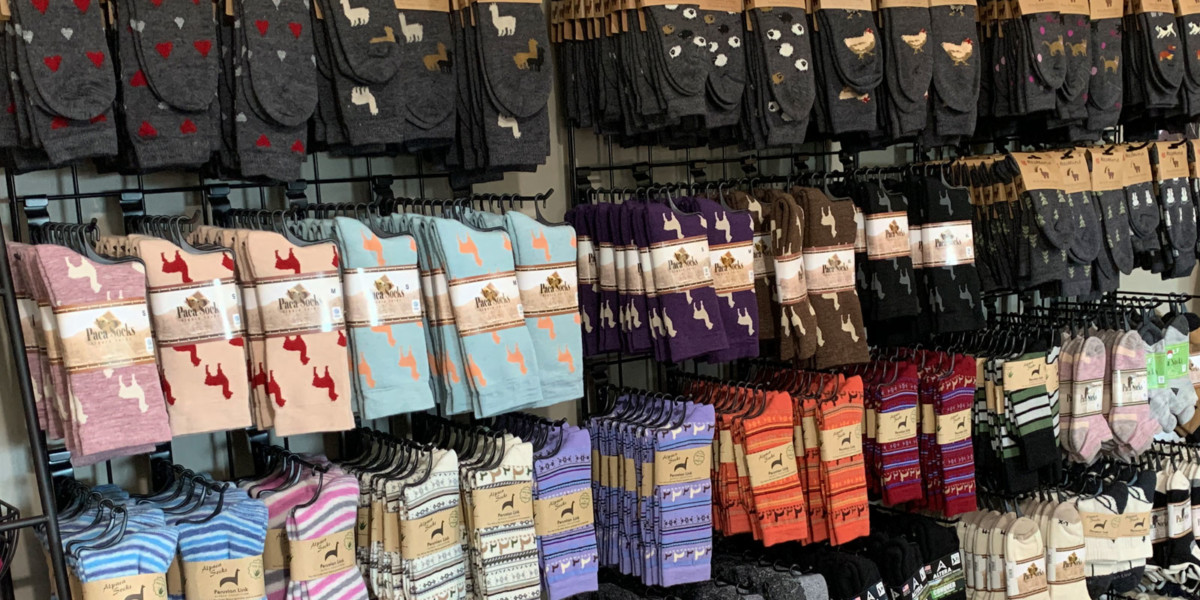

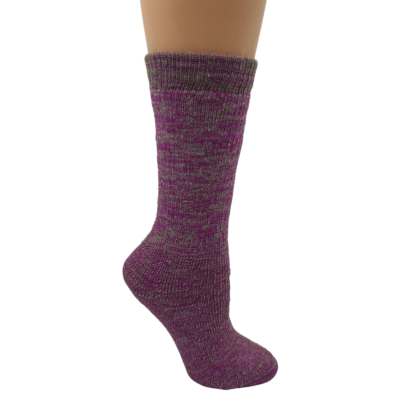
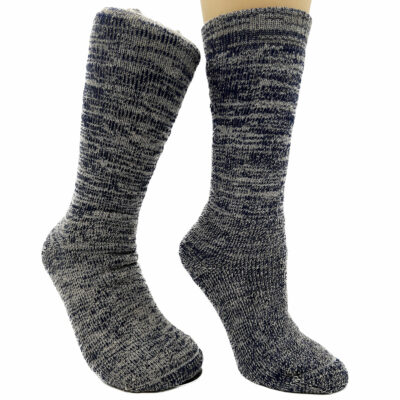
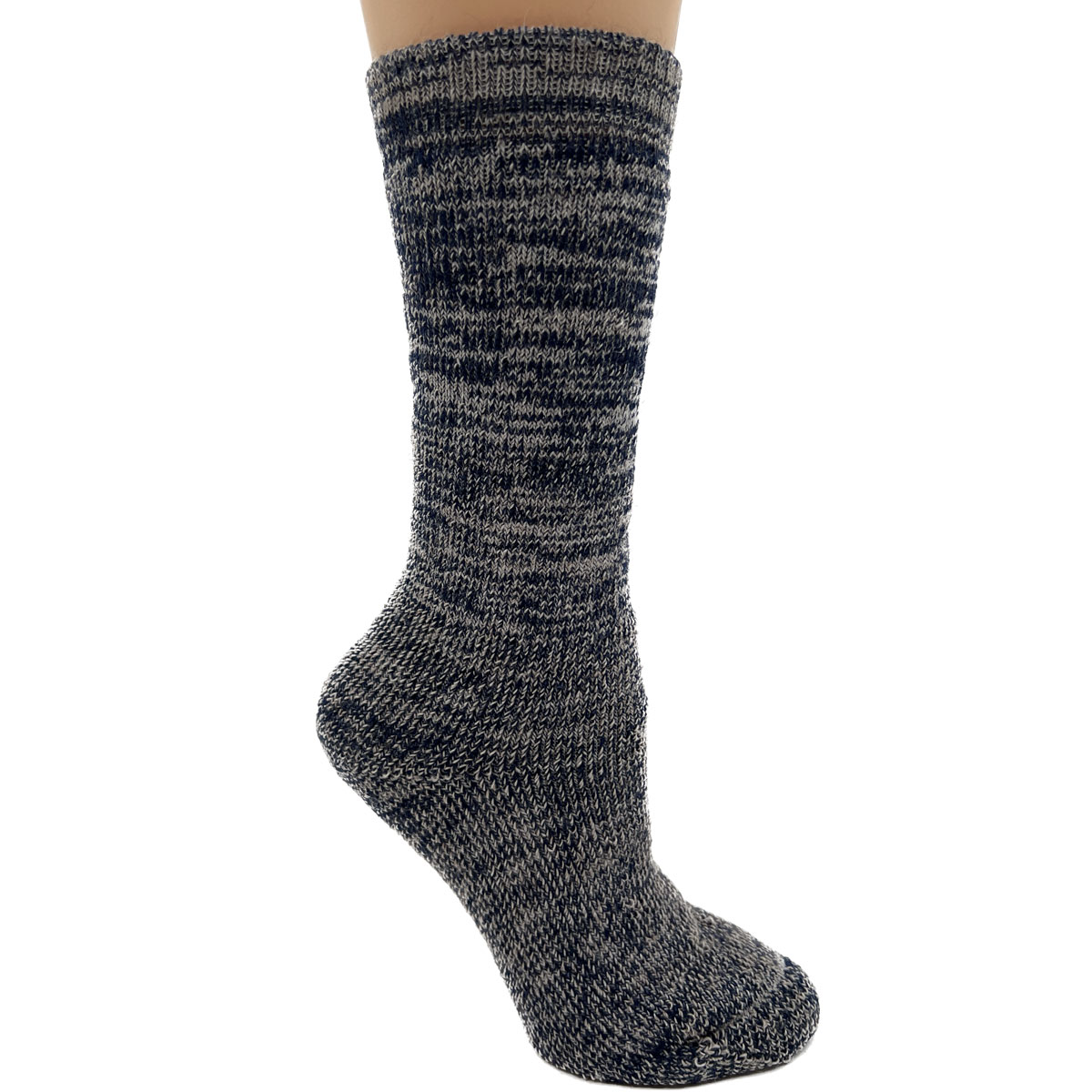
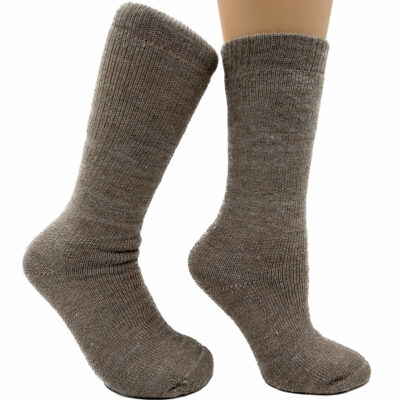
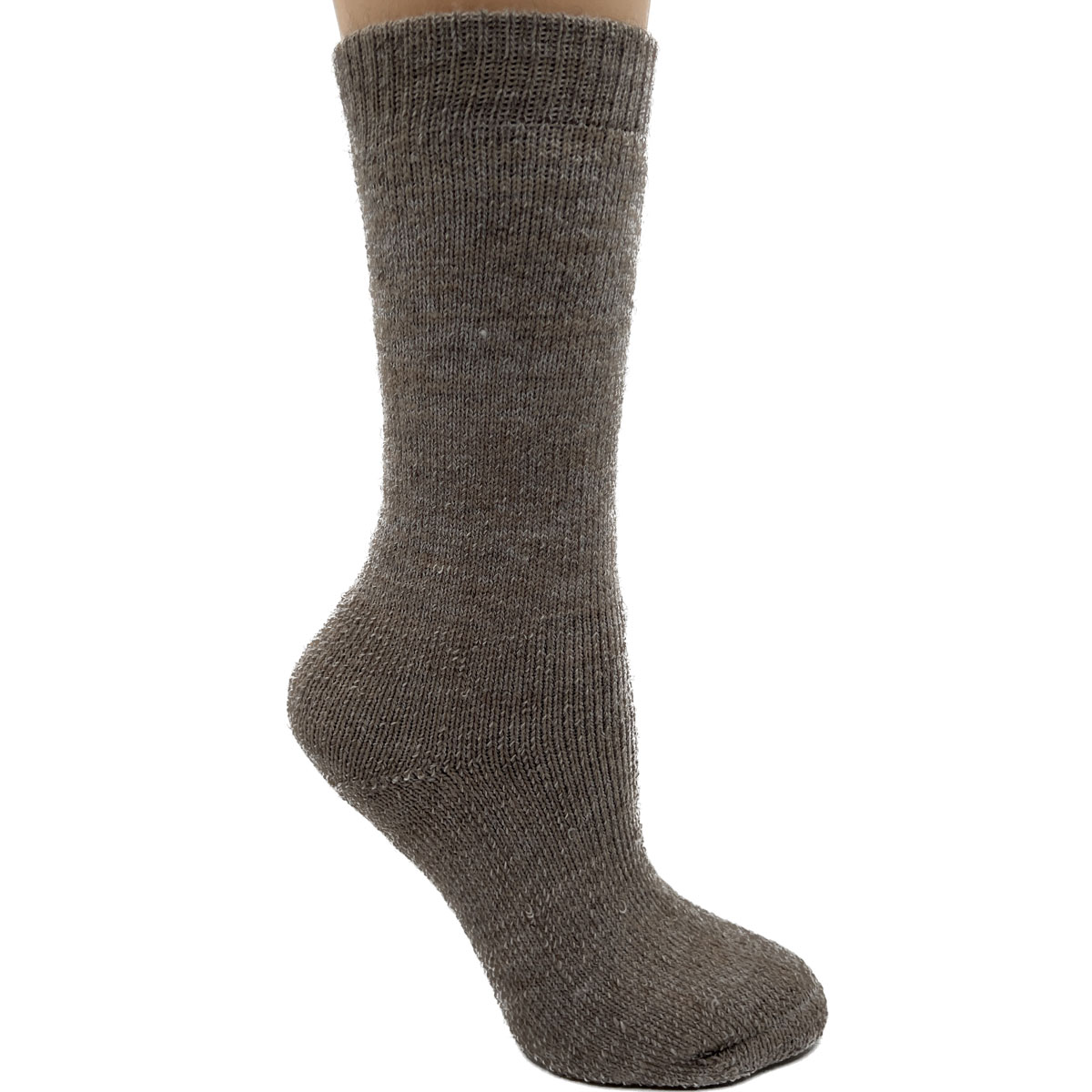
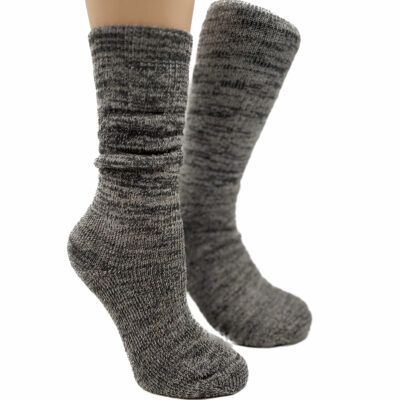
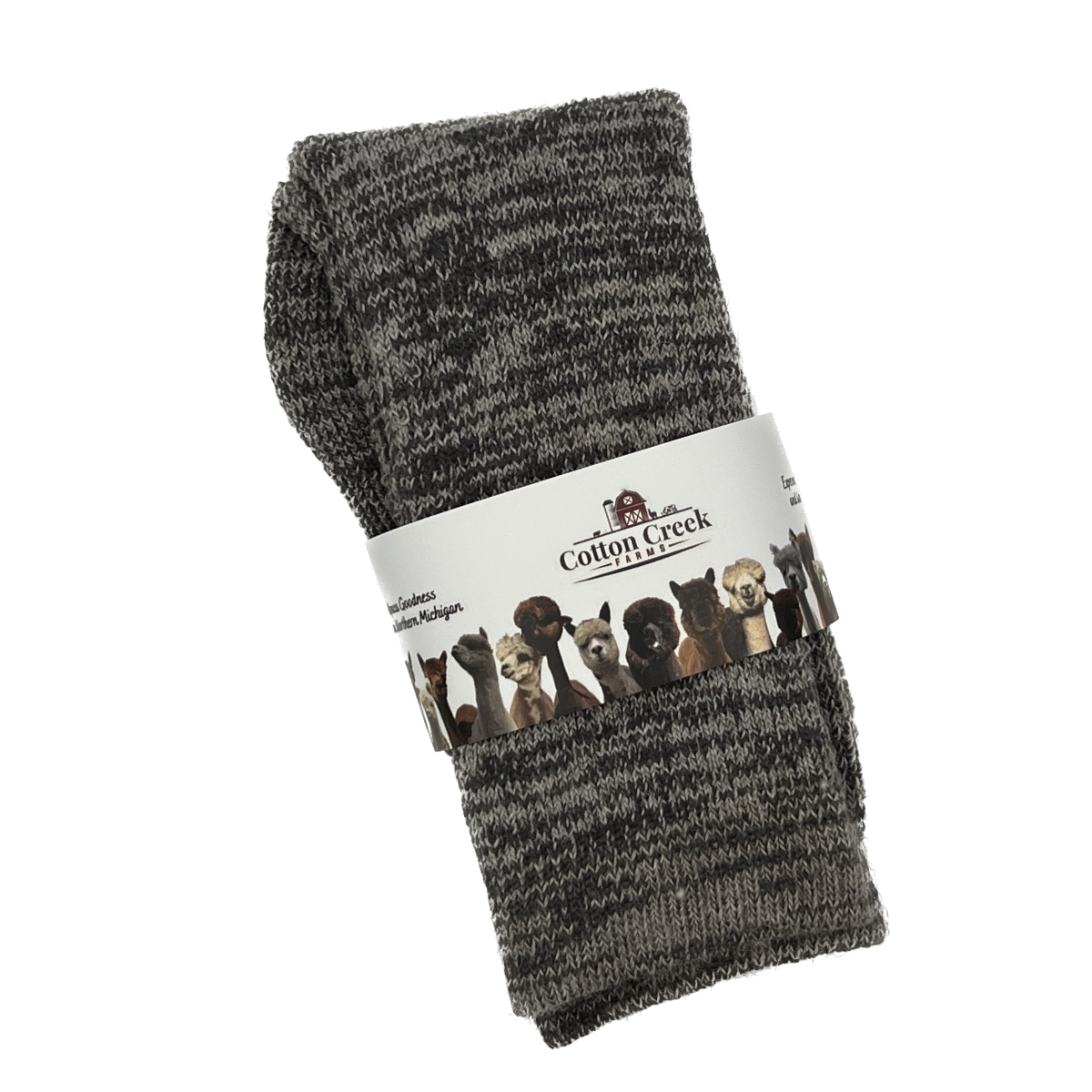
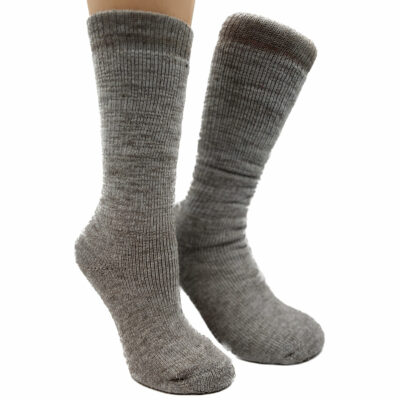

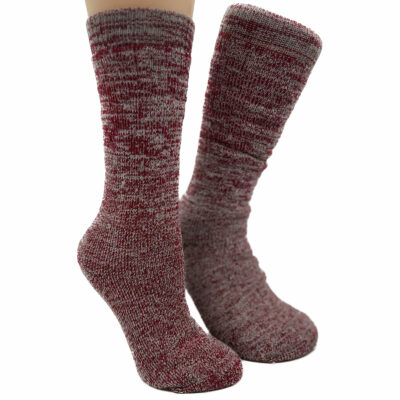
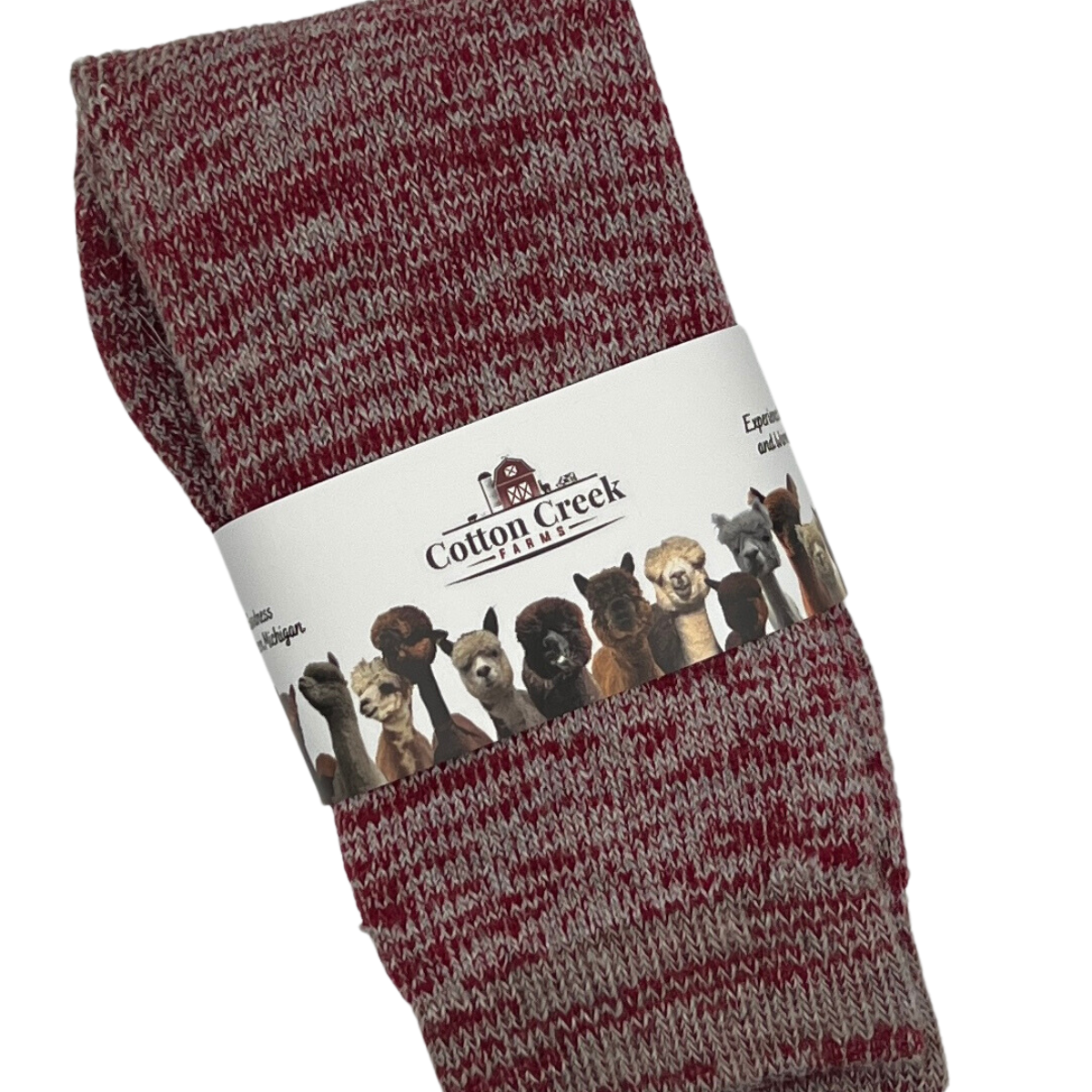
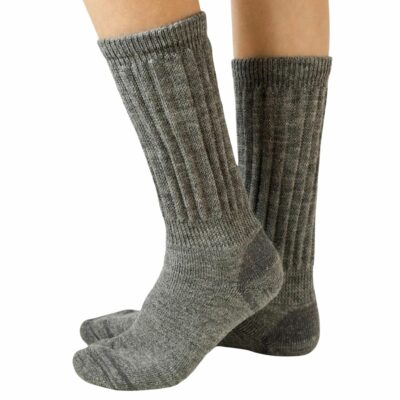
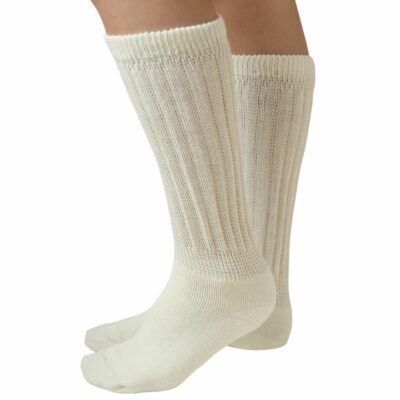
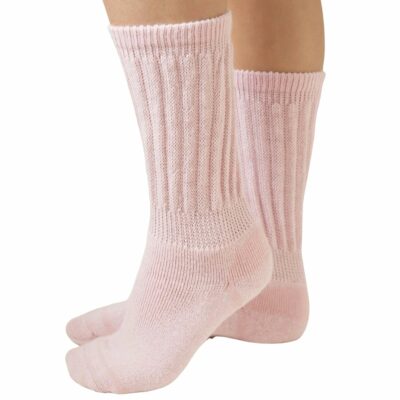
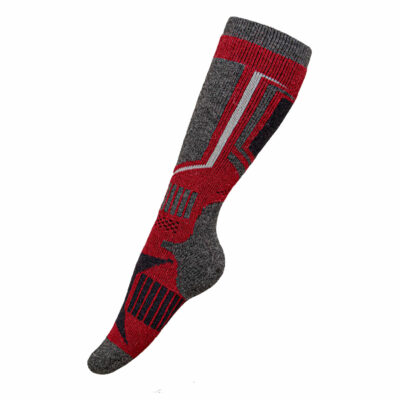
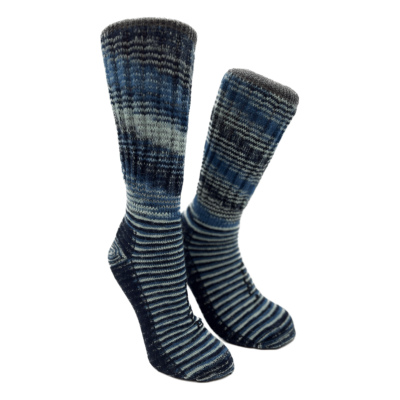

Loved reading this article about alpacas.
Love spinning with the fleece.!
Cute as.
I live in Australia.
I understand that it is not practical to produce 100% alpaca wool socks. What would be a good blend to look for in a heavy sock ?
Lee, you are correct. You’ll rarely find 100% alpaca socks, because they won’t have the ability to keep a secure shape on your feet as you walk. This would also prohibit you from washing them in the washing machine.
Most of our alpaca socks are between 40% – 60% alpaca. I would look for this amount. Anything below that is suspect.
Also, consider the thickness of the sock. Thicker socks will have more alpaca by weight and be warmer, however, they might not fit in everyday shoes of boots.
I find your web site so informative. I cannot decide which ( 3 pair) are for me. I am a “young” 77 year old diabetic lady. I want a medium weight, mid-calf sock. I live in northern WI & have always had cold feet. I am not a winter outside person, just shoveling that white stuff. 😆 looking forward to your response, Victoria D.
Victoria I would recommend the following therapeutic socks based on your desire for half-calf. They will be warm and loose, which would be great for your circulation.
https://cottoncreekfarms.com/store/ea-black-therapeutic-socks/
https://cottoncreekfarms.com/store/ea-white-therapeutic-socks/
https://cottoncreekfarms.com/store/ea-light-grey-therapeutic-socks/
https://cottoncreekfarms.com/store/ea-cocoa-therapeutic-socks/
I am from Wisconsin and whitetail Hunt up north. I am looking for a good pair of hunting socks to wear in my uggs or my muks. I need something that’s heavyweight and I would guess something with the highest percent of alpaca. What do you recommend?
Lori here are the ones my husband (an avid hunter) would recommend:
https://cottoncreekfarms.com/store/lc231-arctic-knee-high-alpaca-socks-for-extreme-cold-dark-grey/
https://cottoncreekfarms.com/store/black-heavy-boot-paca-socks-in-an-alpaca-blend/
https://cottoncreekfarms.com/store/iy-mosaic-classic-sock-in-bubbly/
https://cottoncreekfarms.com/store/michigander-unisex-alpaca-socks-in-navy/
https://cottoncreekfarms.com/store/outdoor-adventure-alpaca-socks/
PS: I’ve listed them with the warmest first. Some come in a variety of colors.
I would love your help! I have a wide toe area with arthritis, and cannot wear socks that are tight in the toe/or have prominent toe seams. I’ve given away countless socks due to this. I also have raynauds and live in a ski town. I’m looking for some thick (as warm as possible) below the ankle socks to wear with my slippers, and also a pair of more technical hiking socks (mid calf). I realize both of these may not be available from the same company and that is fine. I appreciate your article – so informative. I’m over my head with my special needs, however.
In the world of alpaca socks, you’d be looking for therapeutic socks. We have these in half calf, but not below the ankle.
Here is a link to all of our therapeutic alpaca socks: https://cottoncreekfarms.com/store/product-tag/therapeutic-alpaca-socks/
If alpaca socks are worn around the house without shoes, they get very “furry” and unpleasant-looking on the bottom. Is this normal?
Laurie my personal experience has been this highly depends on the materials used and the method of washing and drying. Softer alpaca like “baby alpaca” will wear faster than a standard alpaca that is a higher grade. The materials used to mix with alpaca will also influence durability, as will the way you clean it. Socks that are thrown in the dryer will fur more than others that are laid flat to dry.
Our house is all hardwood floors and I don’t get furry alpaca socks. As you might guess, all I wear is alpaca socks. But I’m careful on picking socks with good mixes (like nylon or acrylic mixed in), I wash them on cool water in the machine, then lay them flat to dry.
My husband, on the other hand, wears his in work boots and throws his socks in the dryer. His socks do not last as long as mine do and this is part the wear of his work boots on them and the heat of the dryer.
Rebecca, I was hoping that I could get your thoughts on my “sock needs”. So my needs are they have to be warm, but more importantly they have to be super soft.
In the past, I’ve bought socks online from Amazon. The first pair I bought was advertised as 100% Alpaca. They were perfect; unfortunately, I didn’t really pay attention to the wash & care instructions. I didn’t have a problem with the shape of them, but the fabric started to lose its softness and also developed little balls of fabric inside the sock. I was going to reorder, but I started having problems of them not stocking my size.
I found another pair on Amazon of 100% Alpaca socks. That is when I learned that even if it says 100% Alpaca, the softness was not guaranteed. They felt like they were 100% sheep ‘s wool.
I’m open to trying a sock with mixed fabric, but it’s a deal breaker if they are not really soft. If you can contact me directly to my email address, then I can send you links to the socks I mentioned earlier. I didn’t want to “advertise” the other brands on your website. I would appreciate your feedback. Thank you. Thomas
Thomas except for a few brands I personally know, I have zero trust in the materials listed on Amazon. This is because I see products listed as 100% alpaca on Amazon and I know the products and their source well enough to know they are anything but. A lot of it is mixed with large amounts of acrylic, so you have to be careful with any Amazon purchase. There is just a lot misrepresented.
Keep in mind that the softer (finer) the fiber used to make socks, the faster they will wear and the more delicate they will be in washing. Most of our industry uses grades 3 (superfine) and 4 to make socks so they are durable. Some providers will make them with grade 2 (baby), but this will be more prone to showing wear, felting, and they are much more difficult to wash.
We are working now on creating a therapeutic sock from our fiber and they will use mainly grade 3 for softness, but we are mixing in a little grade 4 and superwashed merino wool to provide more stability for wear and care. Every sock run in our industry is unique because every fiber batch is unique.
In our store, the Mosaic socks are a great everyday sock that is soft and warm. The heavy-weight boot sock in black is made from baby alpaca fiber, so it will be softer than other socks. That is a thicker sock that is meant for outdoor wear.
My recommendation for washing is always use cool water and never put them in the dryer. Even if the label says it is okay, skip the dryer so you can extend the life of your socks. My husband throws everything in the dryer and I can see a huge difference in his socks versus my socks.